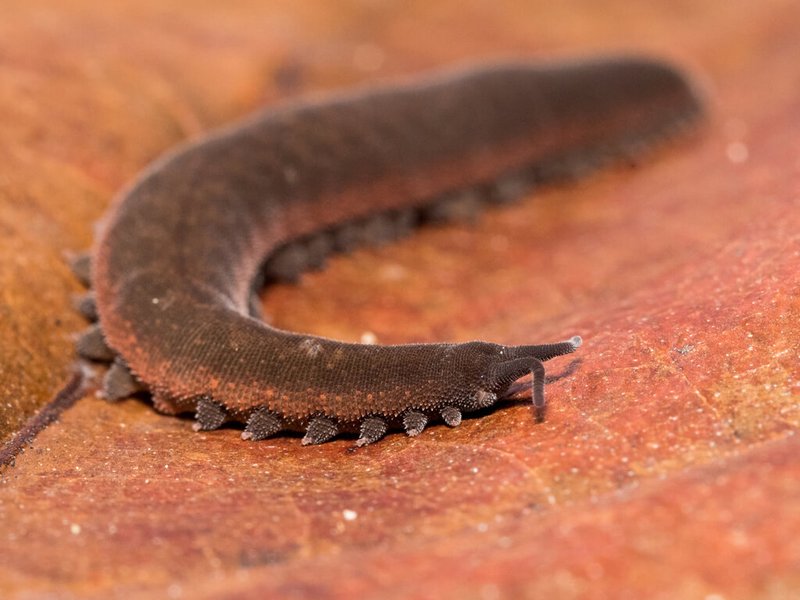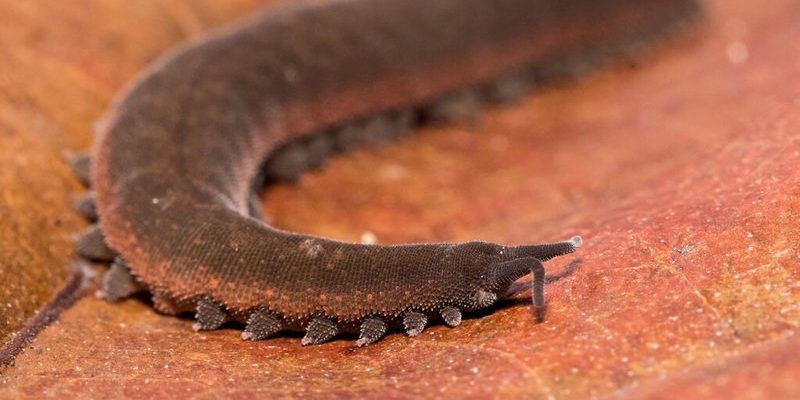
So, what’s the deal with velvet worms and their seasonal behaviors? Well, these creatures are more than just soft, worm-like beings basking in the dampness of their tropical or subtropical environments. They react to changes in temperature, humidity, and food availability, much like us deciding what to wear based on the weather. In this article, we’ll explore how velvet worms behave throughout the seasons, drawing from their stunning adaptations to thrive in their habitats.
Understanding Velvet Worms: A Quick Overview
Velvet worms may look like an odd cross between an earthworm and a caterpillar, with their soft bodies and numerous stubby legs. But they are part of a group called lobopods, which are ancient relatives of arthropods. Found mainly in the tropical rainforests of Central and South America, Africa, and even some parts of Australia, they are not something you’d easily spot unless you’re really looking.
These creatures thrive in moist environments, often hiding beneath leaf litter or in damp crevices. Their body is covered with a protective layer that helps retain moisture, making them particularly suited for humid conditions. That’s important because these little guys require consistent humidity levels to breathe through their skin.
Here’s where it gets interesting. Velvet worms are predatory, using slime to capture prey like insects. Their hunting techniques are quite unique. Imagine a tiny creature with a superpower: it can shoot adhesive slime to ensnare its victims. Isn’t that wild?
How Seasons Affect Velvet Worms
Most animals change their behavior with the seasons, and velvet worms are no exception. Depending on where they live, their seasonal habits can vary significantly. Let’s break it down by the seasons.
Spring and Summer: During these warmer months, velvet worms are most active. Increased humidity and warmer temperatures create the ideal conditions for them to hunt and reproduce. They tend to emerge from their hiding places more frequently, and you might even see them during the daytime, which is unusual since they are primarily nocturnal.
Breeding season peaks in these months. Males often engage in courtship behaviors, such as touching and rubbing against females. After mating, females typically lay their eggs in moist environments, ensuring that the hatchlings will have a suitable habitat once they emerge.
Fall and Winter: When the temperatures drop and the air becomes drier, velvet worms adapt to these changes. They become more reclusive, often retreating into deeper, more protected areas to conserve moisture. This dormancy helps them survive the harsher conditions. During winter, they may even enter a state of quiescence, slowing their metabolism and reducing their activity levels significantly.
Temperature and Humidity: The Golden Rules
Temperature and humidity play a vital role in the lives of velvet worms. If you think about how you might feel uncomfortable when it’s too hot or too dry, these creatures face similar challenges.
When it’s too dry, they risk losing moisture and dehydration. Velvet worms are particularly sensitive to humidity levels. They thrive in areas with high humidity, often at or above 70%. So, during the drier seasons, when humidity drops, they seek out more humid microhabitats, such as under decaying logs or thick foliage.
In contrast, optimal temperatures for velvet worms range from 20°C to 25°C (68°F to 77°F). As the climate warms or cools outside of this range, their activity levels fluctuate. You might think of it like a thermostat—the higher the temperature within their comfort zone, the more active they become.
Feeding Behavior Throughout the Year
Feeding is another aspect of velvet worms’ lives that’s influenced by the seasons. During the spring and summer, when food sources like insects are abundant, velvet worms will actively hunt. Their unique slime-shooting technique is most efficient in these months, where they catch unsuspecting prey by surprise.
As we head into fall and winter, the availability of food decreases, which affects their foraging behavior. They tend to conserve energy and decrease their hunting frequencies, often relying on stored energy reserves until conditions improve. You might say they practice a form of “food rationing,” which helps them survive leaner times.
Adaptations for Survival
Survival is key for velvet worms, and they’ve adapted in some pretty impressive ways to cope with seasonal changes.
One critical adaptation is their **moisture retention ability**. Their skin secretes a protective layer that prevents water loss, allowing them to endure drier conditions. This resilience is vital, especially during the winter months when humidity levels can plummet.
Another fascinating characteristic is their **reproductive strategy**. By breeding in more favorable conditions, they ensure the best chance for their young to survive. The timing of reproduction is closely linked to environmental cues, highlighting their ability to adapt to changing conditions.
Additionally, their predatory behavior offers a strategic advantage. By using slime to capture prey, they can hunt effectively without exposing themselves too much to predators, a significant risk during the more vulnerable winter months when they’re less active.
The Importance of Habitat Conservation
Understanding the seasonal behavior of velvet worms is crucial in recognizing the importance of their habitats. Since they primarily live in humid, forested areas, the loss of these environments directly impacts their survival.
When forests are cut down or altered, it not only affects the humidity levels but also depletes their food sources. Consequently, this poses a significant threat to their populations. Conservation efforts aimed at preserving these ecosystems are vital for ensuring that velvet worms—and countless other species—can continue to thrive.
Grassroots organizations often work to educate communities about the importance of these habitats. When locals understand the value of their unique ecosystems, they are more likely to participate in conservation efforts.
Final Thoughts on Velvet Worms and Their Seasonal Behaviors
Velvet worms might not be the first animal that comes to mind when you think about wildlife behavior, but they certainly have a story worth telling. Their unique adaptations, seasonal behaviors, and the critical role they play in their ecosystems showcase the beauty of biodiversity.
As we keep exploring the natural world, let’s not forget about these remarkable creatures. Protecting their habitats ensures that generations to come can appreciate the fascinating behaviors of velvet worms and the delicate balance of life in our forests. So next time you find yourself wandering through nature, remember that there are hidden wonders, like velvet worms, quietly thriving just out of sight.

